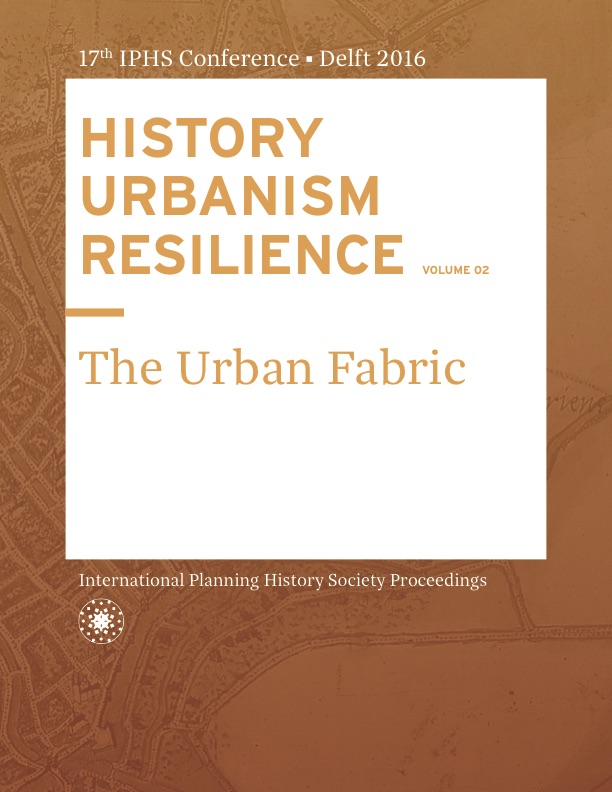Floods and Extension Plans: discourse and projects in Southern Brazil
DOI:
https://doi.org/10.7480/iphs.2016.2.1226Abstract
This paper focuses on four extension projects on floodable areas in the city of Porto Alegre, in the State of Rio Grande do Sul. The city is in the Jacui River delta, which flows into the Guaiba Lake, one of the main waterways in Southern Brazil. Such urban projects – with similar goals amongst themselves, such as integrating housing and industries, for instance – were never implemented. However, as initiatives associated to state economic and strategic development plans (between 1935 and 1960), the study of such projects significantly contributes to the understanding of Porto Alegre’s metropolitan area in its trajectory of expansion. The Jacui delta and its islands limit Northern Porto Alegre. The projects were to be located on such wetlands, given their strategic site in relation to means of external connection, such as waterways, roads and railways. Because this area had always been subject to floods, a solution for overcoming such issue with infrastructure works was always present in the creation of projects for the delta. Porto Alegre, from its foundation to the first half of the 20thcentury, suffered with floods of the Guaiba Lake that caused major damages to the city. Because of that, from 1942, a dam and a wall were built; to this day, they influence the connection between city and Lake, maintaining the collective memory of past floods. Therefore, this work focuses on the different approaches and discourses of the authors of the extension projects for the flood issues, and on their intentions towards making such projects resilient to the recurring floods. While researching the plans, we have observed that the cost of construction work and of the expropriation needed for building the dam have contributed to postponing, deterring and modifying the execution of such projects. In spite of the failure on implementing the projects, their focus on the relation between the city and its surrounding waters became an important resource for the study of the city’s history, given that the wetlands are a significant part of its collective memory.References
Andrade, Carlos R. Monteiro de. “A peste e o plano: o urbanismo sanitarista do Engenheiro Francisco Saturnino de Brito.” PhD diss., University of São Paulo, 1992.
Andrade, Carlos R. Monteiro de. “O plano de Saturnino de Brito para Santos e a construção da cidade moderna no Brasil.” Espaço e Debates 34 (1991): 55-70.
Companhia Renner S.A. “Fábricas Renner: Enchente 1941” (São Leopoldo: Rotermund &Co.1941).
Faria, Luiz A. Ubatuba de. “Urbanização da Várzea do Gravataí” Boletim da Sociedade de Engenharia do Rio Grande do Sul 15 (1936): 51-95
Franco, Sérgio da Costa. Porto Alegre: Guia Histórico. Porto Alegre: Editora da UFRGS, 2006.
Gladosch, Arnaldo. “ O plano diretor da cidade.” Boletim Municipal 1 (1939): 163 – 262.
Guimaraens, Rafael. A enchente de 41. Porto Alegre: Libretos, 2009.
Paiva, Edvaldo Pereira and others. Delta do Jacuí: plano piloto. Porto Alegre: Editora Globo, 1958.
Paiva, Edvaldo Pereira., and Veronese, Roberto., and Hekman, Marcos. Cidade Industrial de Porto Alegre: plano de urbanização. Porto Alegre: Imprensa Oficial, 1961.
Miranda, Adriana Eckert. “Morar em locaes futurosos: os loteamentos para indústria e habitação em Porto Alegre 1930-1955.” Urbana: Revista do Centro Interdisciplinar de Estudos sobre a cidade 8 (2014): 555-576.
Weimer, Günter. “A capital do Positivismo.” In Estudos Urbanos,edited byWrana Panizzi and João Rovatti, 119-132. Porto Alegre: Editora da UFRGS, 1993.

